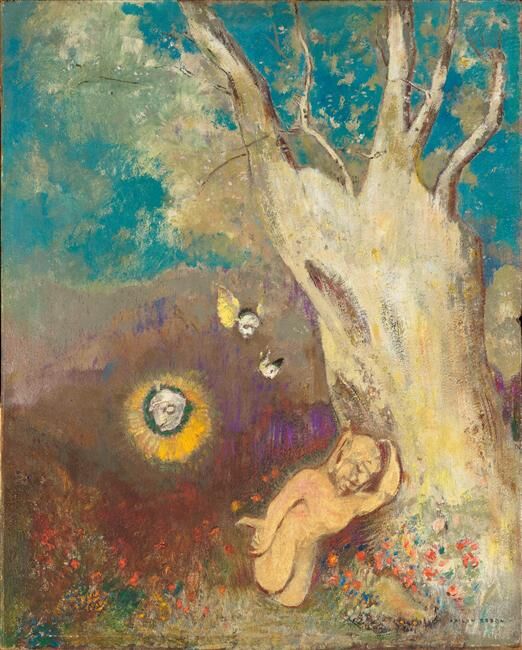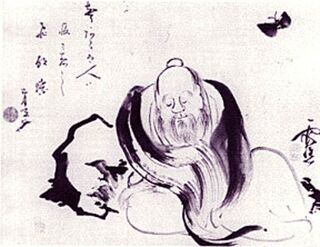Dreaming
Celebrating the Mysterious and Why It Matters
How have you coped with encounters with the mysterious in your life?
Posted November 1, 2021 Reviewed by Lybi Ma

We all love a good dog story. Let me tell you mine.
One chilly winter evening, long past midnight, our golden retriever Daphne woke us with her urgent bark. This was very unusual. Assuming she needed to do her business, we let her out. She had always returned promptly in the past, but on this night, Daphne ran off and disappeared into the darkness. Long minutes passed before she reappeared at the back door, her bright eyes strangely dull. Where had she gone, we wondered. What had happened?

Rex, a beautiful Collie and Daphne’s playmate, lived next door. We thought of them as a doggy couple, true love. The morning after Daphne’s adventure, we met Rex’s tearful owner. Elise related a mysterious occurrence. At about 2 AM, the elderly Rex had collapsed. Elise was carrying him to the car to bring him to the vet ER when Daphne bounded up. Rex roused himself, and the two dogs stared intensely at each other. It seemed, she said, that Daphne had come over to say goodbye. And indeed, Rex died that morning.
Perhaps there is some scientific explanation for this event. We know what animals experience is different in kind and scope from our experience. But I’m choosing to call what happened between Daphne and Rex a mystery. Seeing things through the lens of mystery adds an expanded dimension to what we know is possible factually. To engage with mystery is to open our minds to new possibilities and to recognize that the narratives we tell ourselves about reality are limited.
Albert Einstein once wrote: “The most beautiful experience we can have is the mysterious. It is the fundamental emotion that stands at the cradle of all true art and true science. Whoever does not know it and can no longer wonder, no longer marvel, is as good as dead, and his eyes are dimmed.”—“The World as I See It”

“Mysterious,” the adjective, is a descriptor, but “mystery,” the noun, is pregnant with meaning. It comes from the Latin mysterium, pertaining to a secret rite, a hidden or secret thing of which the meaning, cause, or explanation is unknown. I want to bring the word “mystery” forward, out of the recesses of our minds, so that you can consider your own relationship to it. The inexplicable and unexplainable, rather than being problems to solve, can become portals to a sense that our cosmos is much more intricately connected, much more astonishing in ways we have yet to understand.
A mystery is different from a problem. We may not yet know all the causes of climate change, but we do have methods and technology we can use to investigate the issue. Climate change is a problem, not a mystery. Some mysteries do get solved. The moon, we’ve discovered, is not a ball of cheese.
When a mystery presents itself, we have a felt sense of its presence. This sensation can be uncanny and a bit thrilling. Surprise and recognition tell us we have been touched by something we can’t name. We sometimes say we apprehend a mystery without comprehending it.
Mystery asks big questions in search of answers. Why are we here? What is death? Does fate exist? How real is our reality? Mystery is not opposed to reason but mystery challenges reason as the only method of interpretation. Hold an acorn in your hand. You may be able to explain how an acorn becomes an oak, but do you know why? Why do such things as trees even exist?

These questions may seem privileged and irrelevant in a world filled with great suffering, and yet to be able to put our hearts into tackling the pervasive problems of our societies—inequality, poverty, war, displacement—we need to embody hope. Mystery enlarges our awareness that the inexplicable, the troubling, the devastating can be held with the thought that something we can’t name may exist as a governing force that works for harmony in the universe, something that opens us up to new imaginative possibilities.
Mystery intersects with our lives in dreams. Dreams transport us to another existence that seems as equally real as our daylight life. Freud speculated that dreams arise from unconscious repressed wishes and desires and represent sexual and aggressive drives that the conscious mind censors. Jung, after his split with his early mentor Freud, developed his own theory of dreams. Rather than exploring childhood and its traumas for the roots of neuroses, that is, the past, Jung understood dreams to be messages from the Self, the dream-maker in each of us, whose intention is to supply us with a symbolic picture of our psyche, culled from the personal and collective unconscious. Dreams might then be considered a map, including roadblocks and detours to our personal unfolding, a pictorial path to our destiny. Jung called this process individuation.
Jung wrote: “But when at last we penetrate to its [the dream’s] real meaning, we find ourselves deep in the dreamer’s secrets and discover with astonishment that an apparently quite senseless dream is in the highest degree significant, and that in reality, it speaks only of important and serious matters. This discovery compels rather more respect for the so-called superstition that dreams have a meaning, to which the rationalistic temper of our age has hitherto given short shrift.”—Carl Jung, Problems of Modern Psychotherapy (1929)
Dreams arrive mysteriously and leave us with a sense of having been taken someplace. In dreams, the profound mysteries of symbol, image, and meaning combine. We inhabited an “elsewhere” without leaving our minds or bodies. “In each of us, there is another whom we do not know. He speaks to us in dreams and tells us how differently he sees us from the way we see ourselves.”—Carl Jung, Civilization in Translation (1928).
If exploring mysteries sparks your interest, I encourage you to spend some time discovering where mystery appears in your life. Write down your thoughts, dreams, musings. What are you encountering?




